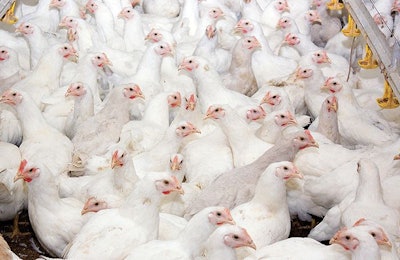
Confidence in the poultry industry fell in the final months of 2020.
Although the metric rebounded in the third quarter of 2020 after a sharp decline in the second quarter when the COVID-19 virus first appeared and disrupted processing and distribution. Unfortunately, this rebound faded at the end of 2020.
Industry confidence falls sharply
Although optimism was at its lowest point since the fourth quarter of 2012 (excluding the COVID-impacted second quarter of this year), the Overall Index was still average. The WATT/Rennier Poultry Confidence Index declined in the fourth quarter of 2020 after rebounding in the third quarter. The Overall Index now stands at 102 (1985 baseline = 100), down from 118 during the third quarter. The Present Situation Index – assessing current business and labor market conditions – held steady at 90. The Expectations Index – based on a short-term outlook for business, labor, and profit conditions – declined to 109 from 136.
These findings parallel those found in the general economy. The Conference Board’s Consumer Confidence Index (CCI) declined in November 2020. The Overall Index was 96 (100 = baseline), down from 102 in October 2020. The Conference Board said, “Consumers do not foresee the economy, nor the labor market, gaining strength … the resurgence of COVID-19 is further increasing uncertainty and exacerbating concerns about the outlook.”

After rebounding in the third quarter, the WATT/Rennier Poultry Confidence Index declined in the fourth quarter of 2020.
Political and market influence
A few poultry respondents were less confident because of a perceived decline in the general economy or political turmoil typically associated with a presidential election. Two more important factors were: increased overhead costs and rising feed costs.
COVID-19 has forced many integrators to increase their budgets for cleaning supplies and personal protective equipment. Some have also needed to offer incentives and bonuses to retain or attract labor.
Also, feed costs appear to be on the rise. The U.S. Department of Agriculture significantly raised their forecasts for feed costs in late November 2020, with corn up 40 cents a bushel and soybean meal $20 a short ton higher than their October 2020 forecast.
In summary
The COVID-19 crisis, and now rising feed costs, have negatively impacted confidence in the poultry industry. However, optimism remained ‘normal’ when examined against the Poultry Confidence Index's entire 25-year history.
All in all, the poultry industry has experienced a fantastic run and remains healthy. We suspect future feed costs will be the primary determinant of confidence over the next six months.
















